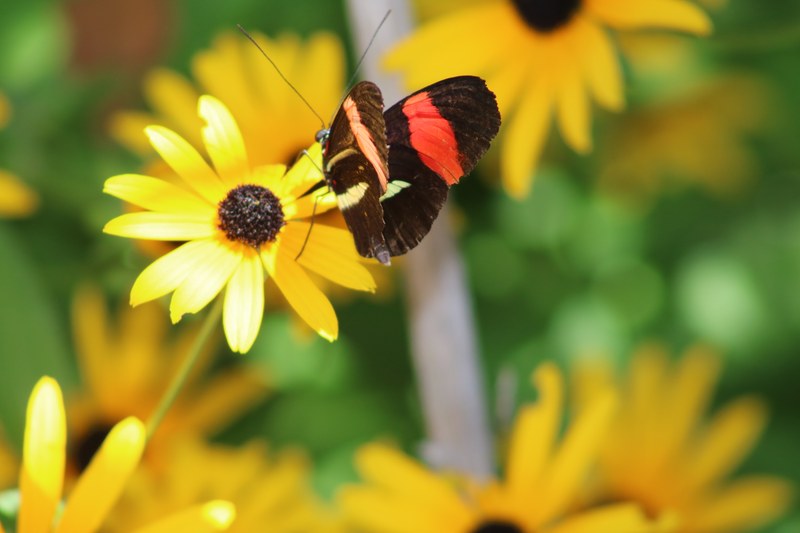
Pollinator Garden Tips
How to attract pollinators like bees and butterflies to your garden.
Pollinators like bees, butterflies and birds are incredibly important to maintaining habitats and ecosystems. And helping pollinators helps food production: native bees and honeybees pollinate 75 percent of the fruits and vegetables grown in the United States. You can help attract and support pollinators in your back yard by providing them with a pollinator garden. Here's how:
- Use native plant species
- Native plants have adapted (have specific qualities that allow them to survive) to your climate.
- Some native pollinators have a symbiotic relationship with native plants. Both plant and pollinator benefit from this relationship.
- When you use native plants, they need less water than non-native plants, which helps decrease your water usage and water bill.
- We get to learn more about the plants around us!
- Choose a variety of plants
- There are so many different pollinators to consider. Some can only see specific colors, others tend to fly low, or some have specific adaptations that they use while pollinating (For instance, a hummingbird’s long tongue is specifically designed for certain flowers). It helps to plant a variety to ensure all pollinators are included.
- Some plants bloom early, some bloom later. Plan your garden early to ensure that there is always food for pollinators throughout the year.
- A variety of blooms gives you a more colorful and diverse garden to enjoy!
- Give them something to drink
- Provide shallow water dishes filled with rocks for insects to take a quick sip.
- If you can, provide birdbaths for birds. They’re pollinators too!
- Go easy on the chemicals
- Reduce pesticide use and try to practice Integrated Pest Management (IPM).
- IPM includes five simple steps that help reduce chemicals in your garden:
- Identify/Monitor: Find out what the pests are and what they’re doing.
- Evaluate: Determine if the pest is causing damage and whether it's necessary to deter them.
- Prevent: Some pests can be stopped by using pest-resistant plants, planting early, using barriers, or supplying natural predators.
- Action: Use a variety of methods to help prevent pests in your garden. This will increase your likelihood of success.
- Monitor: Continue to monitor the pest population and decide if the methods you are using are working or if extra methods are needed.
- If you are going to use pesticides, ensure that they are appropriate for your garden and that you are spraying them at night when pollinators aren’t out and about.
Additional Resources
These are just some helpful tips to get you started on your own pollinator garden! Below are some additional resources to help you out along the way.
- https://www.almanac.com/video/get-rid-garden-pests-naturally#
- http://wildfriends.unm.edu/assets/docs/nursery-brochure.pdf
- https://www.pollinator.org/guides?gclid=CjwKCAjwhOD0BRAQEiwAK7JHmCBsSbEsPt3_3W6UWncYT-Rop1xTMVcl_4dVLyS-HrrxO0vud4jF8RoCENYQAvD_BwE
- http://xerces.org/pollinator-conservation/yards-and-gardens
- https://www.npsnm.org/native-plants-for-beneficial-insects-pollinators/
- https://www.youtube.com/watch?v=da-JHzRcD8M&feature=youtu.be
